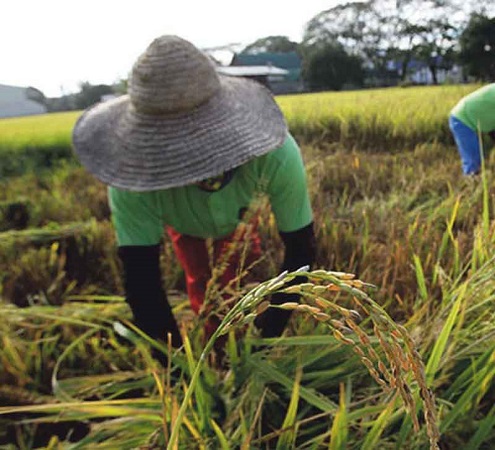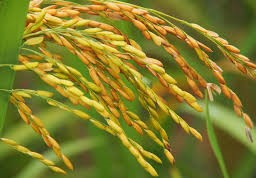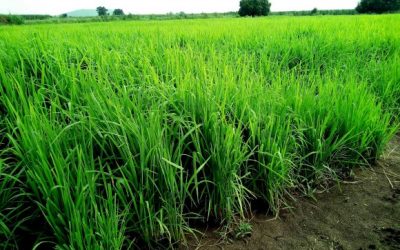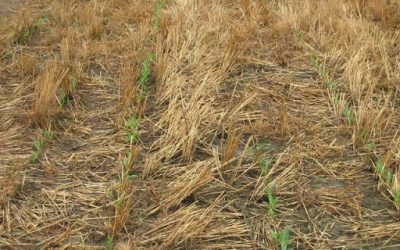Harvest, Threshing & Drying Tips for Rice.

Harvesting is the process of obtaining plant parts or component of plant-parts that has reached its physiological maturity or at the stage of growth ideal for separating it from the stock plant. The act of harvesting can be picking, pulling, plucking, slashing, cutting, stripping and shaking the economic part of the plant that is of interest to the harvester.
Time to harvest a crop is often determined by changes that takes place in the economic part of the crop and, in some cases, the entire plant. This change can be in the form of visual appearance, smell, colour, size, and the moisture content.
(1) For the rice crop, the harvest time is often determined by the visual appearance, color, and moisture content of the grains. When the crop ripens, rice grains will be filled and tight, the grain color change from green to olive-green to yellow and the moisture content drops between 18%w.b and 22%w.b. [on weight-basis].
(2) It is important to take note of the optimum harvesting time and crop maturity signs. Not taking note of the timing or missing the signs can cause the rice grains to remain in the field where the grain moisture content falls below 18%. When this occurs, any incidental wetting by rainfalls will cause the grains to absorb moisture and may germinate. Some rice varieties have shattering ability and any delay harvesting will cause yield losses through shattering. That is when ripen grains just fall to the ground when slight winds and rainfalls touch the crop; or when the farmer is moving through the field.
(3) Two main observations used to determine the correct harvest time for rice grains are:
Moisture content: Grain moisture content is ideally between 18 and 22%w.b. (wet basis). Grains should be firm but not crumbly when pressed between the teeth. Ripe grains per panicle: The crop should be harvested when 80-85% of the grains on the field have changed color from green to matured yellow.
(4) When harvesting the rice by sickle or knife, cut the rice straw 4-5 cm from the ground level and do not leave much bigger portion of its standing. Standing straws and straw stumps still remaining in the field can have stem-borer worms and adults to complete its life cycle. Always destroy the straw by cutting as low as possible to the ground and up-root and destroy the straw stumps and incorporate it into the soil by hoeing soon after the harvest and ready for the next season.
(5) Do not allow the rice crop to extend its growing period by allowing secondary tillers with late panicles emerging when the main rice crop is about ripening. Overlap cropping allows the spreading of the flowering, grain-filling, grain ripening and harvesting period and timing, giving opportunity to pests like stem-borers and rice bugs to thrive.
(6) Overlap cropping will also result in harvest of immature and empty grains which can be the cause of extra volume and weight of rubbish, resulting in increased grain-fracture during milling when not winnowed and cleaned.
Threshing
Threshing is the physical process of separating the grains from the rice straw and the panicles. Threshing of rice can be done by hand, foot, or simply by a swinging, beating and whipping actions against a framed object.
Threshing can also be done with winnowing machines. In PNG agriculture, threshing grains is not a common practice, therefore, all new rice grower will need to learn the right operation and techniques for threshing. Threshed rice will contain a lot of chaff and foreign materials, therefore, after drying, cleaning needs to be carried out. The following steps are undertaking during the threshing:
– Harvested paddy should be threshed simultaneously on the day of harvest.
– Rice straws and panicles harvested that are wet from over-night rains or by the morning dew must be field-dried before threshing, often morning-half of the day is committed to harvesting and afternoon-half of the day is to do all the threshing.
– Use wide canvass or plastic sheets with the edges raised to catch all the grains being threshed through the beating-action.
– Dry the paddy soon after threshing both in the outdoor and the in-door sheds to prevent grains from fermentation if the moisture remains in a heap or bag of grains for too long.
Drying Rice
Drying is the process that reduces the moisture content of the rice paddy down to a safe-level where rice can be properly milled and, importantly, put away safely for storage. Drying is the most critical operation after harvesting a rice crop. Any delay in the drying process, incomplete drying or ineffective drying will reduce the grain quality and result in post-harvest losses.
– Sun-dry the wet paddy by spreading the grains evenly on a plastic sheet or a canvass with the layer of about 4-5cm depth. Turn-over the paddy every 30 minutes using a garden rake and by using hand and foot, tenderly spreading the grains as they dry. Slow-drying of the rice paddy will prevent cracking; and by contrast


